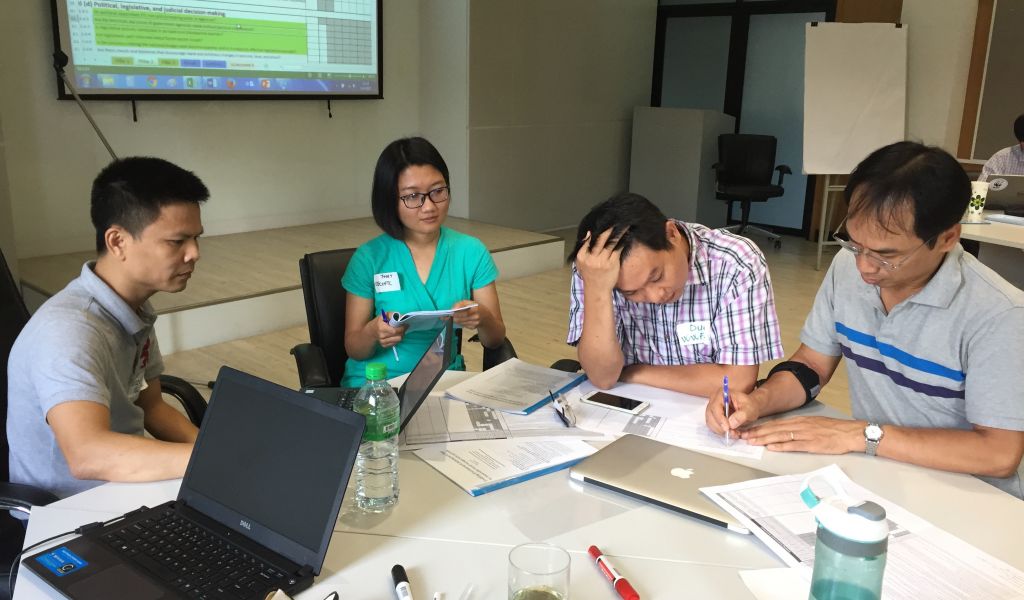WWF and RECOFTC host forest governance workshop
introducing WWF’s Enabling Environment Assessment Tool for Responsible Trade and Management at RECOFTC in Bangkok.

Bangkok, Thailand - Forest governance is the foundation on which responsible forestry and trade takes place, so getting it right - ensuring governance is effective and participatory - is important. A clear picture of the governance environment is needed to understand the limitations and flaws within existing forest governance systems, and to work to improve them.
Last week, as part of the EU-supported Voices for the Mekong Forests (V4MF) project, WWF and RECOFTC held a workshop
introducing WWF’s Enabling Environment Assessment Tool for  Responsible Trade and Management at RECOFTC in Bangkok. Participants from across the Mekong region, RECOFTC country programs and partner organisations attended.
Responsible Trade and Management at RECOFTC in Bangkok. Participants from across the Mekong region, RECOFTC country programs and partner organisations attended.
Thibault Ledecq, WWF regional forest coordinator, one of the workshop organisers, said that the “workshop aims to build common understanding between implementing partners on how to set-up forest governance baseline within the project’s target countries and landscapes.” WWF has developed and tested the Enabling Environment Assessment Tool (EEAT) to assist in streamlining forest governance assessment and subsequent monitoring.
The EEAT is a tool that allows users to: systematically assess the state of the enabling environment for sound forest management and responsible trade; identify opportunities and develop comprehensive strategies around key issues; and, monitor over time the effectiveness and impacts of its policy, advocacy and improved governance work at project and program levels.
Etienne Delattre, V4MF regional project coordinator at RECOFTC, said that “many countries have had programs to improve forest governance, but impacts are not known. This is partly because there were no baseline assessments conducted and no monitoring of progress and changes made. If that is the case, there is always the risk to only work at the surface level and act upon visible symptoms, without having the full knowledge needed to address the root causes and drivers of poor governance”.
It is expected that the use of the EEAT will assist in overcoming these challenges. One of the participants, Phyo Thu, from the Myanmar Environment Rehabilitation-conservation Network (MERN), sees participation as central to effective forest governance, “there are many factors that make governance systems weak, in terms of financial support, in terms of staff members’ capacity. It is impossible for the government to work alone, for the CSOs to work alone, for the community to work alone. So it is really important to establish participation.”
After the three days of training, Phyo Thu believes that the EEAT will be useful for his work as it has been developed through best practices and from multiple resources, though it will need to be customized to suit the local context. He hopes that it can help to bring all stakeholders into the process of assessing and monitoring forest governance.
For more information on V4MF see here: https://www.recoftc.org/project/voices-mekong-forests

